3 Signs You Should Consider Cellulite Reduction Treatment
Whether mild or severe, cellulite can seriously impact your confidence. If you’re ready to say goodbye to lumps and bumps, we’re unpacking everything you need to know about cellulite reduction, what causes this condition, what non-invasive treatments are available and how they could help boost your self-esteem.
What is cellulite?
Cellulite is a common bodily condition characterised by dimpling or unevenness of the skin. It’s caused by the accumulation of fat deposits beneath the skin’s surface, as well as a thickening and tightening of the fibrous connective tissues that surround and support the fat cells. This can result in the characteristic dimpling and unevenness of the skin, both of which are common cellulite symptoms. Over time, the connective tissues may become more rigid and inflexible, further contributing to the appearance of dimples, lumps and bumps. While this condition affects men and women of all ages, it does not cause physical discomfort or health problems. However, it can be a source of aesthetic concern for some individuals.
While everybody is different, there are certain areas where cellulite is most commonly found:
- Thighs and hips — These are two of the most common areas for cellulite to develop. Lumps and bumps can begin to appear on the front, back and sides of the thighs and hips.
- Buttocks — Cellulite on the buttocks cause a dimpled or “cottage cheese” appearance.
- Abdomen — Cellulite can also appear on the abdomen, particularly in women who have given birth or experienced weight fluctuations, like rapid weight loss or rapid weight gain.
- Upper arms — Cellulite can often appear on the upper arms, particularly in women who have lost weight quickly or are dealing with skin sagging, which is part and parcel of the ageing process.
What causes cellulite?
Cellulite is a multifactorial condition, meaning no single cause can be attributed to its development. Some of the factors that are thought to contribute to the development of cellulite symptoms include:
- Hormones
Hormones such as oestrogen, insulin and thyroid hormones play a role in the development of cellulite by affecting the metabolism of fat cells and the structure of connective tissue. Regular hormonal changes also affect collagen production and skin laxity, contributing to the formation or worsening of cellulite symptoms.
- Genetics
Genetics can predispose some individuals to develop cellulite, as certain genes may affect the body’s ability to metabolise and store fat cells effectively.
- Age
As we age, our skin loses its suppleness, plumpness and laxity, while the connective tissue that supports fat cells also weakens over time. This can cause the fat cells to bulge, leading to the characteristic dimpling and unevenness of the skin associated with the common condition.
- Lifestyle factors
While cellulite doesn’t discriminate, lifestyle factors like diet, exercise and smoking can heavily contribute to the development of this condition. A diet high in saturated or hydrogenated fats and artificial sugars can lead to the accumulation of toxins and fat in the body, which can exacerbate the appearance of cellulite.
Lack of exercise also results in the natural decline of muscle mass, which contributes to the development of cellulite, as it can lead to poor circulation and a buildup of toxins in the body. Meanwhile, smoking can affect blood vessels and decrease collagen production in the skin, leading to more pronounced dimples.
Dehydration can also make cellulite more noticeable, so increasing your water intake will help flush toxins from the body that can contribute to cellulite.
- Gender
Cellulite is far more common in women than in men — in fact, 90% of women have cellulite. This is thought to be due to differences in how fat cells are distributed in the body. Women tend to have a higher proportion of body fat and a different distribution of fat cells than men. Women also have thinner skin and less connective tissue than men, which can make cellulite more visible.
- Long-term stress
Coupled with a poor diet and lack of exercise, stress can increase your cortisol levels, which affects the metabolism of fat cells and the structure of connective tissue. Stress creates the perfect environment for fat to make a home in the subcutaneous layer of the skin.
3 signs up should consider treatment for cellulite
While this condition is a common concern for many, seeking treatment for cellulite will ultimately depend on your personal preferences and aesthetic goals. Here are three points to consider when weighing up whether a cellulite reduction treatment is right for you:
1. Cellulite symptoms impact your confidence or self-esteem
Whether you have visible lumps and bumps on your buttocks, thighs or upper arms, cellulite can have a profoundly negative impact on your body confidence. The societal pressure to have perfectly smooth and filtered skin can be overwhelming, so you’re not alone if you have cellulite and feel that today’s beauty standards are totally unattainable.
If you feel embarrassed or uncomfortable in situations where your skin is exposed, or you avoid wearing clothing that draws attention to your areas of concern, a professional cellulite reduction treatment may help improve your confidence and better your relationship with your body.
2. You want to improve the overall texture and firmness of your skin
Whether you’ve gained and lost weight rapidly or your skin is losing its natural laxity with age, a non-invasive cellulite reduction treatment will help tighten, firm and sculpt the skin while eliminating stubborn pockets of fat that won’t seem to budge with diet or exercise alone. From mild to severe cellulite, there’s a suite of innovative, pain-free treatments to help melt fat, regenerate collagen, improve blood circulation and smoothen the skin’s surface to reduce the appearance of lumps and bumps.
3. You want to combat cellulite symptoms without going under the knife
While liposuction was once the only surgical treatment available to remove large and small pockets of fat, the latest advancements in aesthetic technology and non-invasive body sculpting techniques have opened up new possibilities.
Now, a range of in-clinic techniques are available, and each method provides similar outcomes to surgical alternatives without the need for downtime, incisions, anaesthesia or scarring. So, if you’re looking for a pain-free, science-backed solution, cellulite reduction treatments are convenient, risk-free and highly effective.
Discover Elite Body Contouring’s non-invasive cellulite reduction treatments
As Sydney’s leading non-invasive clinic, we have a long-established history of delivering transformative results to our clients. Depending on your areas of concern and the severity of your cellulite, you may opt for one of the following cellulite treatments at Elite Body Contouring:
LIPOcel™ uses High-Intensity Focused Ultrasound (HIFU) to permanently destroy fat cells while simultaneously tightening the skin. This 2-in-1 treatment targets fat deposits in small and large areas, with clinical studies proving that each session will permanently reduce fat by 20 to 40%. While you’ll notice immediate skin texture and tone improvements, results continue to develop over 12 weeks, guaranteeing transformative results that erase the appearance of lumps and bumps.
- PowerShape™ Complete Cellulite Treatment
PowerShape utilises a 3-in-1 device that combines Bipolar RF, low-level laser and vacuum roller technology to provide body contouring, slimming and cellulite reduction. Whether you have mild or severe cellulite, this pain-free technique is highly effective at melting fat, regenerating collagen production and improving blood circulation to smooth the skin’s surface. It can also be performed on the buttocks to reshape, tighten and contour the skin to offer a more rounded and lifted appearance.
Ready to enjoy smooth, lump-free skin? Book a cellulite treatment at EBC today
Having worked alongside medical professionals in the field, our team of skilled therapists have developed a comprehensive cellulite classification system — so we can rate the severity of your cellulite symptoms to gauge which fat reduction and skin tightening technology will provide the best long-term results.
When you book your complimentary consultation at one of our clinics, our team will listen to your aesthetic concerns and assess your body composition before recommending a combination of treatments or how many sessions you’ll need to tone, smooth and sculpt your figure to meet your expectations. Before you schedule your appointment, don’t forget to review our before and after images to see patients who have had their bodies transformed after undergoing treatment for cellulite.



